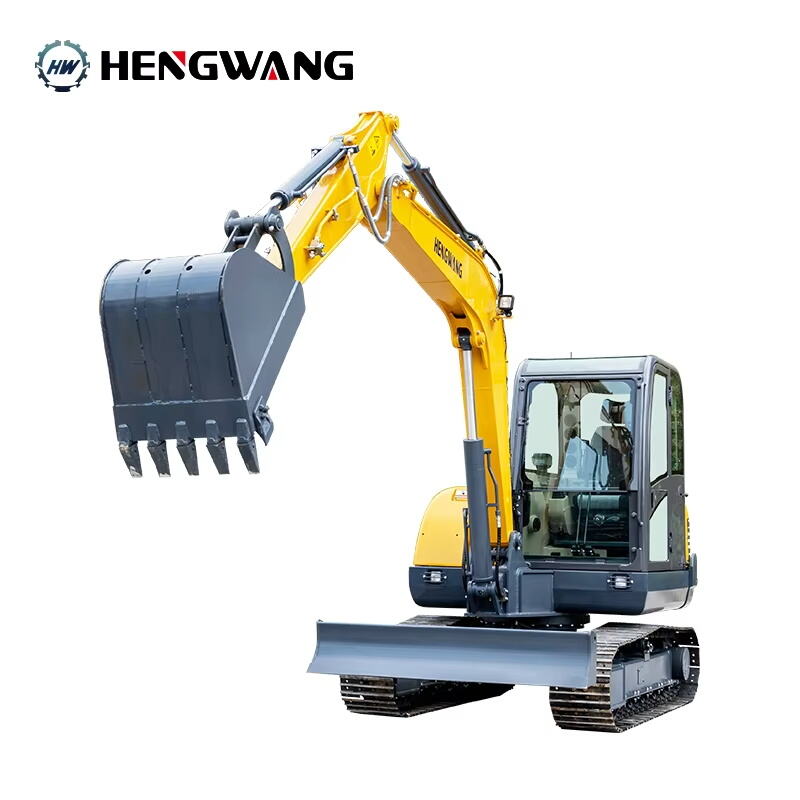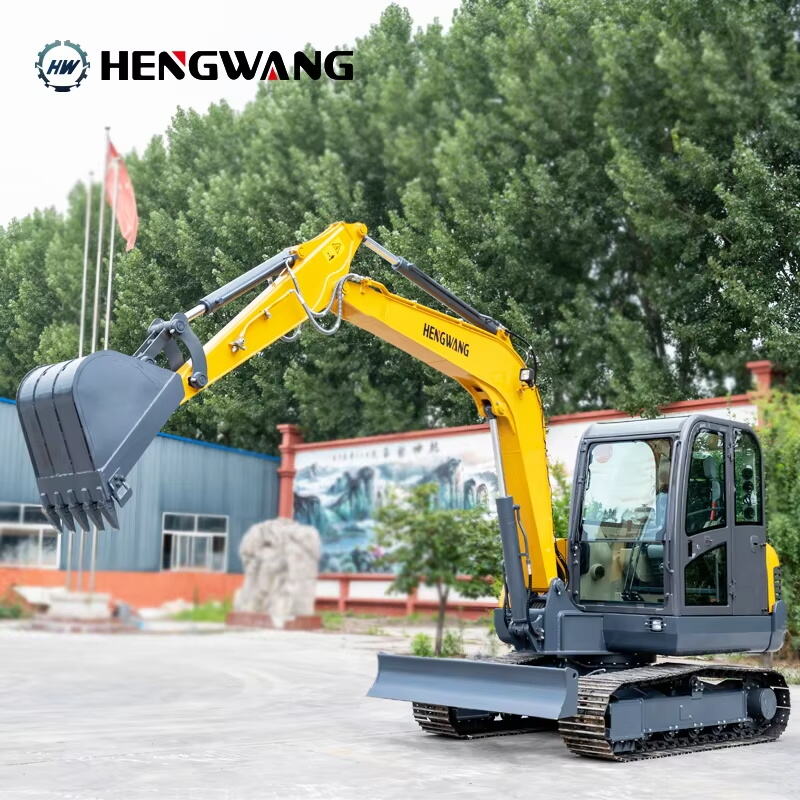Crawler vs. Wheeled Excavators: Mobility Compared
For those in construction, understanding the mobility differences between crawler and wheeled excavators is crucial. Why do crawler excavators perform better in off-road conditions? Their wide tracks distribute weight effectively, minimizing ground pressure and maintaining stable operations on uneven modern excavators, excelling in hilly or rocky terrains.
Terrain Adaptability and Stability Features
What makes crawler excavators advantageous in excavation tasks? Their stability on challenging terrains, from mud to sand, is unmatched, making them the preferred choice for variable construction site conditions. On the contrary, wheeled excavators offer speed on paved surfaces but can struggle with agility on soft or uneven grounds.
Common Use Cases in Construction Projects
Crawler excavators are often favored in large construction projects due to their exceptional stability, traction, and power. Their tracked undercarriage allows them to operate effectively on uneven, soft, or muddy terrain without losing balance, making them ideal for demanding tasks such as trenching, heavy lifting, excavation, and site grading where a firm footing is essential. These machines deliver the strength and reliability required to handle substantial loads and maintain consistent performance over extended periods.
On the other hand, wheeled excavators are better suited for urban and paved environments. They can travel quickly between job sites without causing damage to roads and surfaces, offering higher speeds that are particularly advantageous for utility work, road maintenance, and projects requiring frequent repositioning. This mobility allows operators to complete tasks efficiently in areas with restricted space and strict traffic considerations.
Mini/Compact vs. Heavy-Duty Excavator Variations
In urban settings, compact excavators are highly effective at navigating space-limited environments with ease and precision. Their smaller size and reduced footprint allow them to access tight spots and confined areas that larger machines simply cannot reach. This makes them particularly valuable for tasks such as landscaping in residential neighborhoods, installing underground utilities along narrow streets, and working on small construction sites where maneuverability is essential. Additionally, compact excavators can operate with minimal disruption to surrounding structures and traffic, making them an ideal choice for projects in densely populated areas.
Urban Applications of Compact Excavators
Compact excavators offer a wide range of benefits that make them especially attractive for modern construction projects. Their low noise levels and reduced emissions help meet strict urban regulations and environmental standards, allowing contractors to operate in residential neighborhoods and city centers without disturbing nearby residents or businesses. Additionally, these machines are easier to transport due to their lighter weight and smaller dimensions, simplifying logistical challenges and reducing the costs associated with moving equipment between job sites. Their versatility also enables them to perform a variety of tasks, from trenching and grading to demolition and material handling, all while maintaining excellent fuel efficiency and minimizing the overall environmental impact.
Large-Scale Mining with Heavy-Duty Models
Heavy-duty excavators are vital for large-scale mining operations because they are specifically engineered to handle the most demanding excavation and material handling tasks. These powerful machines excel at digging deep into hard, compacted ground and extracting substantial volumes of soil, rock, or minerals with remarkable efficiency. Equipped with high-capacity buckets, robust hydraulic systems, and reinforced components, heavy-duty excavators can withstand continuous heavy loads and harsh working conditions typical of mining sites. Their superior digging force and extended reach enable operators to remove overburden, load haul trucks quickly, and maintain high productivity levels essential for meeting tight project deadlines. In addition, their durability and reliability help minimize downtime and reduce maintenance costs over the long term, making them an indispensable asset in any large-scale mining operation.
Engine Power Segmentation in Modern Excavators
Engine power plays a critical role in determining an excavator’s overall functionality and performance. Machines equipped with low-horsepower engines are designed primarily for lightweight tasks such as gardening, small-scale landscaping, and general maintenance work. These models offer efficient, cost-effective solutions for residential areas where space is limited and heavy-duty capabilities are unnecessary. Their lower fuel consumption and quieter operation make them particularly well-suited to environments that demand minimal disruption.
In contrast, excavators with high-capacity engines deliver the substantial power and hydraulic force required to tackle robust industrial demands. Whether it’s large-scale earthmoving, demolition, mining, or deep trenching, these powerful machines can handle significant loads and maintain consistent performance under challenging conditions. The enhanced engine output enables faster cycle times, greater digging depth, and improved lifting capacity, ensuring productivity and reliability on even the most demanding job sites.
Low-Horsepower Options for Lightweight Tasks
Low-horsepower excavators are ideal for small-scale projects because their compact, lightweight design makes them easy to transport between job sites, even in tight or hard-to-reach areas. This mobility reduces setup time and simplifies logistics, allowing contractors to move quickly from one task to another. In addition, their smaller footprint enables them to operate efficiently in confined spaces without damaging surrounding structures or landscaping. These excavators can be equipped with a variety of attachments, such as buckets, augers, and hydraulic breakers, which significantly enhance their versatility and adaptability to different tasks. Whether it’s trenching, grading, digging, or light demolition, low-horsepower excavators offer a practical, cost-effective solution that delivers reliable performance for residential and small commercial projects.
High-Capacity Engines for Industrial Demands
High-capacity engines are indispensable for industrial operations because they provide the robust power and torque necessary to handle the most demanding tasks and challenging environments. Equipped with advanced fuel efficiency technologies, these engines not only deliver substantial performance but also help optimize operational costs by reducing fuel consumption. Their ability to maintain consistent power output under heavy loads ensures productivity and reliability in industries such as construction, mining, and manufacturing, where equipment must operate continuously and efficiently to meet rigorous production demands.
Electric and ICE-Driven Excavator Technologies
Environmental Benefits of Electric Models
Electric excavators provide numerous environmental advantages, producing zero tailpipe emissions and reducing urban air pollution. How do they enhance workplace safety? With silent operations and minimized heat emissions, electric models lower noise pollution and operating costs.
Fuel Efficiency Comparisons in ICE Excavators
Why is fuel efficiency crucial in ICE excavators? Technologies like eco mode and idle shutdown optimize fuel consumption, reducing operational costs and maximizing efficiency in large-scale projects. Regular maintenance further enhances performance.
Excavator Technologies in Action
Discover how advancements in excavator technologies are reshaping industry practices. Explore automation and smart excavator solutions in the Excavator segment within the surface mining equipment market report.

Specialized Excavators for Industry Applications
Demolition-Specific Attachment Configurations
How do specialized demolition excavators enhance efficiency? Equipped with hydraulic hammers and shears, they efficiently dismantle structures, boosting precision and skill in urban settings while ensuring optimal performance.
Agricultural and Forestry Equipment Adaptations
What adaptations make excavators suitable for agriculture and forestry? Extended reach and modified attachments facilitate tasks like tilling and planting, increasing capabilities and promoting sustainable land management practices.
FAQ Section
What are the main differences between crawler and wheeled excavators?
Crawler excavators offer stability on uneven terrains, making them ideal for off-road tasks. Wheeled excavators offer speed on paved surfaces but struggle on soft ground.
How do compact excavators benefit urban construction projects?
Compact excavators navigate tight spaces, offering low noise levels and reduced emissions, making them suitable for city environments.
Why are heavy-duty excavators preferred in mining applications?
Heavy-duty excavators handle large-scale operations with efficiency, featuring high-capacity buckets and sturdy hydraulic systems.
What environmental advantages do electric excavators offer?
Electric excavators produce zero emissions and operate quietly, reducing air and noise pollution.
How do ICE excavators optimize fuel efficiency?
ICE excavators utilize technologies like eco mode to maximize efficiency, resulting in lower operational costs.


